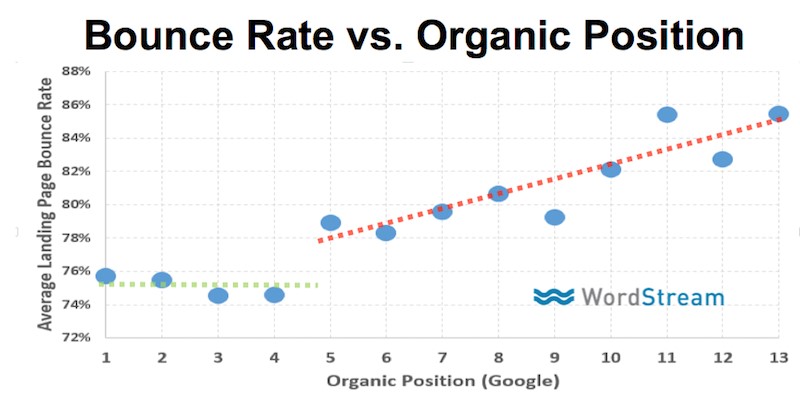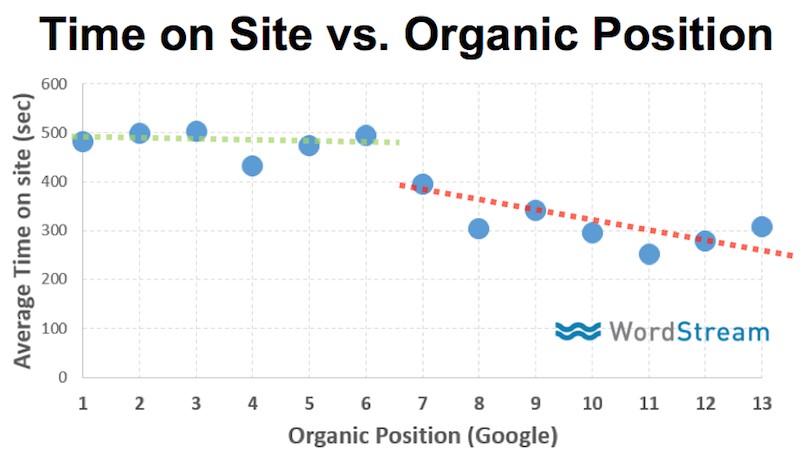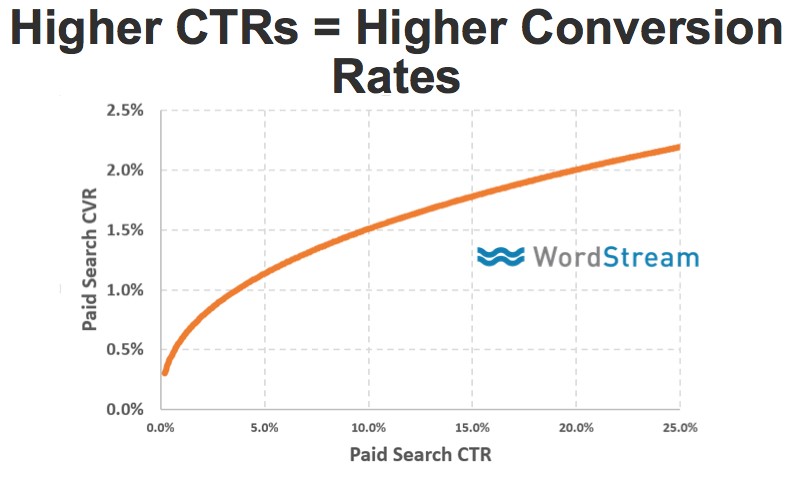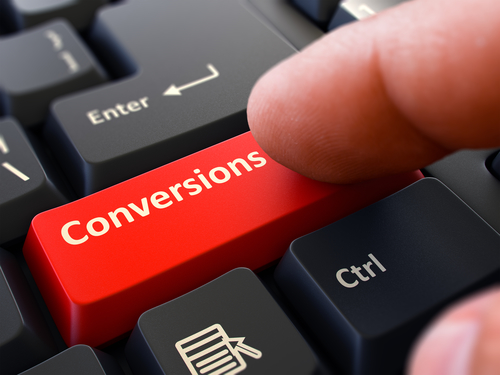Does the engagement rate increase organic rankings? | Weboptim
The organic click-through rate is an extremely important indicator. True, it is not a direct ranking factor, but it is part of Google's algorithm and has an indirect impact on rankings.
A high click-through rate is essential, but positive website engagement is even more critical. What value is there if hundreds or thousands of people click on a brilliant headline, but those people aren't here for just a few seconds?
The minimum expected level of engagement varies by industry and by search.
How does Google measure dwell time? How does it differ from bounce rate and time on page?
The dwell time is the actual time a visitor spends on the page before returning to the search results.
In 2011, Google introduced a new option to block a domain from appearing in search results. If you clicked on a result and then returned to the search results within a few seconds, a "block this site" function appeared. With this one click, we could block all results for that domain.
Even though this feature is no longer available, we know that it was based on whether someone would turn back and, if so, how quickly. So it has been proven that Google measures dwell time.
The problem is that we have no way of measuring this time. But we can measure 3 engagement metrics that are proportional and equivalent to dwell time: bounce rate, time on page and conversion rate.
Does the reversal rate affect organic results?
Not a direct ranking factor. The bounce rate is not part of Google's algorithm, but there is clearly a link between bounce rate and rankings.

The algorithm is likely to use the engagement indicator as a scoring method. Think of it as a check on click-through rate, which cannot be quantified with the current algorithm.
We think Google measures dwell time to check whether websites really deserve a high click-through rate or whether it is just a click fraud.
Another important question: can better rankings lead to higher engagement indicators, and vice versa? Or are both caused by some completely independent factors?
Until you work at Google, you don't know the secrets of the algorithm. 🙂
Regardless, improving user engagement metrics such as bounce rate has its own benefits. A lower bounce rate is just an indicator of success, not a guarantee.
Does the time spent on the site affect organic results?
If users spend a decent amount of time on the site for our keyword/content, we are more likely to be in the top 6 positions. If engagement is poor or average, we could be in position 7 or below.

After a certain minimum threshold, however, there is no change: even if the user spends 2 hours on the site, it doesn't matter.
So Google uses dwell time here to validate the click-through rate. These metrics help it to know whether users got what they were looking for.
The conversion rate
A higher click-through rate typically means a higher conversion rate.

If people are really excited when they click on something, that excitement can turn into a purchase or a subscription.
What is a good conversion rate?
On average, across all industries, the accepted conversion rate on a website is around 2%, with the top 10% of websites achieving a conversion rate of around 11%. Absolute conversion rates vary widely by industry.
Conversion rate is a very important success indicator because it gives the highest value, meaning that users have found what they were looking for.
How to increase the conversion rate from 2% to around 10%?
1. Change your offer (a lot)
Rather than running A/B tests on a button colour or changing the images, it's better to bin the current offer and create a completely new one.
But what can we offer that is enough to make you buy +10%? Let's be open. The answer is always right in front of us.
2. Facebook ads
We can influence users with it, even before they search. Brand awareness can distort people's thinking, which has a big impact on engagement.
Promote inspiring, engaging, memorable content to your target market. We often find that although many people view the content, most don't buy immediately. Don't worry, remember, it takes time.
Rather than buying, our aim should be to "capture" them so that they will seek our products in the future. Even if it's an unbranded search, having exposed them to marketing influences in the past, they are more likely to click and choose us.
Facebook and many other vendors have conducted studies proving that Facebook ads have an impact on clicks and conversions from paid and organic search.
How do we use Facebook for this purpose?
- interest-based targeting: we can reach people who are looking for what we sell.
- demographic targeting: we can reach people who are looking for things we sell, perhaps in the coming month.
- behavioural targeting: we can reach people who buy things that are related to our product.
It doesn't just work on Facebook. It also works for display ads through the Google Display Network. We can use custom audiences to target people who searched for words we're interested in but didn't click through to our site.
3. Remarketing
People are busy and their attention spans are short. If you don't use remarketing, even if you spend a lot of money and time on SEO, the result of your marketing will only be that users visit the site once.
We need to make sure that those who have visited the site don't forget it, and keep coming back for more. So we want them to stay engaged and convert.
Remarketing has an excellent impact on engagement metrics such as dwell time, conversion rate, time on page, because remarketing allows people to get to know us better, which means they are more likely to stay with us longer.

4. Get rid of the bad neighbours
If you've tried all of the above, but your website still has bad "neighbours" (pages) with low CTR, it's easy to delete them.
It can be very difficult for Google to calculate engagement for each keyword/page combination. They rely on a domain-level engagement score in case detailed data is not available. Adwords does something similar for the account-level quality metric.
Many people think that Google also judges the domain link points for each sub-page when it ranks it organically. If you delete the bad pages, the theory goes, the domain-level link score will go up.
Obviously, better CTR, higher engagement metrics and better conversion rates lead to more sales. But improvements in these metrics can also lead to better organic search results.
Conclusion
It is clear that organic CTR matters. We may not realize that high CTR with low engagement is not that useful.
There are no tricks. Don't invest in sites that specialise in increasing click-through rates. Even though it may work, it will not work well in the future. Google is fighting click fraud on the ad networks and will apply the lessons learned there to organic search results.
The most useful SEO effort is to optimise your click-through rate and conversion rate. And this will help you achieve more conversions very quickly. Use tactics and strategies to test your engagement rate and then start optimizing it.
Source: moz.com